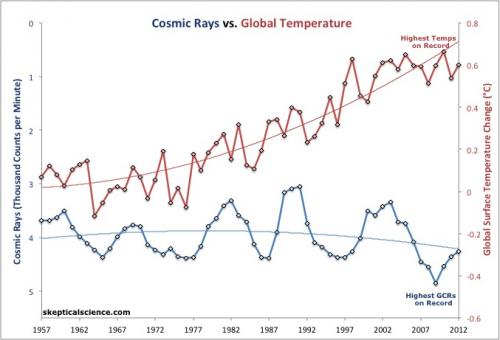 Arguments
Arguments
 Software
Software
 Resources
Comments
Resources
Comments
 The Consensus Project
The Consensus Project
 Translations
Translations
 About
Support
About
Support


Latest Posts
- Skeptical Science New Research for Week #14 2025
- Two-part webinar about the scientific consensus on human-caused global warming
- Sabin 33 #22 - How does waste from wind turbines compare to waste from fossil fuel use?
- Clean energy generates major economic benefits, especially in red states
- 2025 SkS Weekly Climate Change & Global Warming News Roundup #13
- Skeptical Science New Research for Week #13 2025
- Climate skeptics have new favorite graph; it shows the opposite of what they claim
- Sabin 33 #21 - How does production of wind turbine components compare with burning fossil fuels?
- China will need 10,000GW of wind and solar by 2060
- 2025 SkS Weekly Climate Change & Global Warming News Roundup #12
- Skeptical Science New Research for Week #12 2025
- Climate Fresk - a neat way to make the complexity of climate change less puzzling
- Sabin 33 #20 - Is offshore wind development harmful to whales and other marine life?
- Do Americans really want urban sprawl?
- 2025 SkS Weekly Climate Change & Global Warming News Roundup #11
- Fact brief - Is waste heat from industrial activity the reason the planet is warming?
- Skeptical Science New Research for Week #11 2025
- Visualizing daily global temperatures
- Sabin 33 #19 - Are wind turbines a major threat to wildlife?
- The National Hurricane Center set an all-time record for forecast accuracy in 2024
- 2025 SkS Weekly Climate Change & Global Warming News Roundup #10
- Fact brief - Is Greenland losing land ice?
- The Cranky Uncle game can now be played in 16 languages!
- Skeptical Science New Research for Week #10 2025
- Climate Adam: Protecting our Planet from President Trump
- Sabin 33 #18 - Can shadow flicker from wind turbines trigger seizures in people with epilepsy?
- Cuts to U.S. weather and climate research could put public safety at risk
- 2025 SkS Weekly Climate Change & Global Warming News Roundup #09
- Fact brief - Are high CO2 levels harmless because they also occurred in the past?
- Skeptical Science New Research for Week #9 2025
Archived Rebuttal
This is the archived Basic rebuttal to the climate myth "It's cosmic rays". Click here to view the latest rebuttal.
What the science says...
|
Cosmic ray counts have increased over the past 50 years, so if they do influence global temperatures, they are having a cooling effect. |
The galactic cosmic ray (GCR) warming hypothesis is based on the premise that GCRs can "seed" clouds, and clouds reflect sunilight. So if there are fewer GCRs reaching Earth (because a strong solar magnetic field is deflecting them away), the hypothesis says there will be fewer clouds, more sunlight reaching the Earth's surface, and thus more global warming.
So more solar activity means a stronger solar magnetic field, which means fewer GCRs reaching Earth, which hypothetically means fewer clouds and more warming.
The body of scientific research has determined that GCRs are actually not very effective at seeding clouds. However, the hypothesis is also disproven just by examining the data. Over the past five decades, the number of GCRs reaching Earth has increased, and in recent years reached record high numbers. This means that if the GCR-warming hypothesis is correct, this increase in GCRs should actually be causing global cooling over the past five decades, and particularly cold temperatures in recent years.
On the contrary, while GCRs are up, global temperatures are also way up, and temperatures in recent years reached record highs.
Annual average GCR counts per minute (blue - note that numbers decrease going up the left vertical axis, because lower GCRs should mean higher temperatures) from the Neutron Monitor Database vs. annual average global surface temperature (red, right vertical axis) from NOAA NCDC, both with second order polynomial fits.
Updated on 2015-10-04 by dana1981.
THE ESCALATOR

(free to republish)

























































